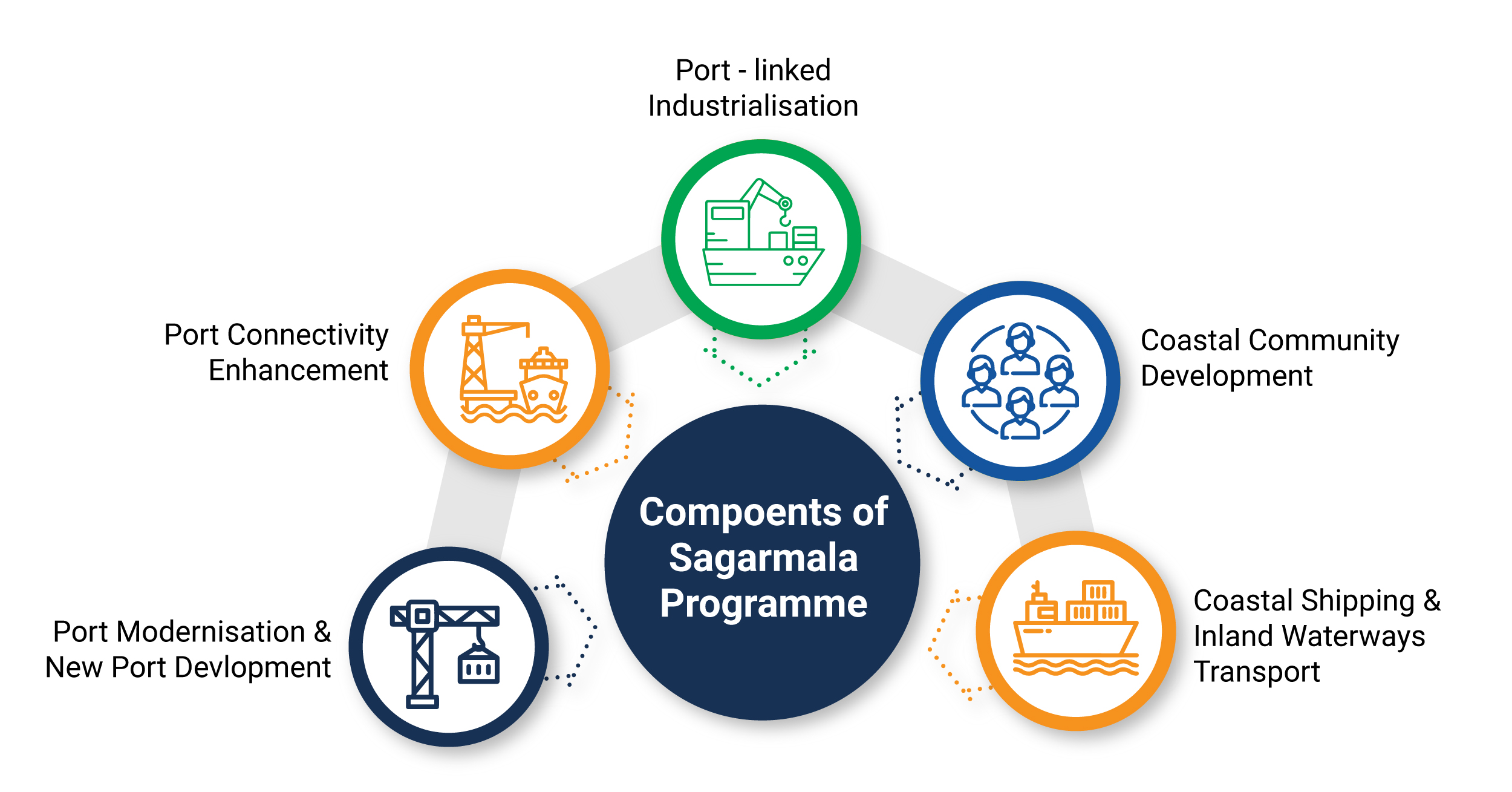Priyanka Kumari | 26th Sep 2022

Maritime sector has played a major role in shaping the trade and economy of countries across the world and continues to be a significant driver of global trade. Present day maritime industry comprises several sub-sectors such as shipping, port development, marine technology, fisheries, logistics, marine tourism and more, involving stakeholders from technical, business, research as well as political domains.
Both India and EU recognise the importance of the maritime industry’s role in economic development and have taken focused steps towards its growth. Major initiatives have been taken by both regions with an objective to accelerate the development of the sector in order to realise the potential of the blue economy. Maritime industry in India is a huge untapped market and has become an area of focus owing to the Government of India’s (GoI) latest initiatives.
One such notable initiative is ‘Sagarmala’, a flagship programme by Government of India for the overall development of the Indian maritime sector through focused attention on port-led development and transformation of logistics competitiveness of India across its 7,500 km coastline and 14,500 km of potentially navigable waterways. Over 574 projects (amounting to ~EUR 74 billion) have been identified for implementation during 2015-2035, linked to different components of the programme (depicted below) contributing not only to infrastructural development but capacity development and technology integration, too.

In addition to port-led development of Indian maritime sector through Sagarmala, India Maritime Vision 2030 provides a blueprint to achieve accelerated development of India’s diverse maritime sector in a co-ordinated manner through 150+ initiatives spanning over sub-sectors of ports, shipping and waterways with an investment value of ~EUR 34.7 billion. These projects are being implemented by port authorities, relevant Central Ministries, State Governments (State Maritime Boards), and other agencies in Public Private Partnership (PPP) mode.
The Following initiatives taken by the Indian Government further ensure ease-of-doing-business’.
Additionally, the Ministry of Ports, Shipping and Waterways of India has an international co-operation division which is a dedicated unit for managing bilateral or multi-lateral co-operation as well as matters related to International Maritime Organisation (IMO) of which India is a member.
This approach of integrated and comprehensive development of the civil maritime sector of the Indian Government resonates closely with the ‘Integrated Maritime Policy’ (IMP) of European Union. Focus areas of India’s Maritime Vision like sustainable and green maritime, international maritime co-operation, maritime education, research & training, technology & innovation, institutional strengthening and marine tourism aligns with areas of actions defined under the IMP’s objectives. The intersections in policy-level commitments by both regions is expected to create opportunities for stakeholders from EU and India to collaborate.
As part of the ’India-EU Strategic Partnership: A Roadmap to 2025‘, both regions are committed to work together on maritime initiatives for mutually beneficial co-operation including sustainable development, protection of marine ecology, elimination of plastic waste and marine debris, and to offer financially viable models for development of connectivity and infrastructure. Such policy level commitment coupled with ease-of-doing-business initiatives by the Indian Government to promote international investment make Indian civil maritime sector, a market with high growth prospects.
According to a report on port-led development of coastal economic clusters by the Indian Ministry of Shipping, the maritime services industry is expected to be worth of ~EUR 6 billion by 2025. Associated market sector for maritime cluster also has huge potential opportunity by 2025 for the Indian economy with engineering, fabrication and machining. Particularly, technology and innovations from European companies which address challenges in port logistics, marine and inland water navigation, sustainability, and development of coastal communities would be welcomed by Indian stakeholders, both private and public. Other aspects to be considered for participating in the Indian civil maritime sector is to offer solutions which are scalable and help in reducing the operational cost.
It is also important to acknowledge that international companies might face few challenges in entering the Indian maritime space, for example, finding a reliable partner, understanding the tax system and compliances, bureaucracy, limited knowledge of IPR in India, etc. As a catalyst in the EU-India Business Corridor, EBTC works to support businesses from Europe for expansion in the Indian market by linking them to relevant stakeholders and providing necessary assistance to overcome challenges.
indian, civil, ocean